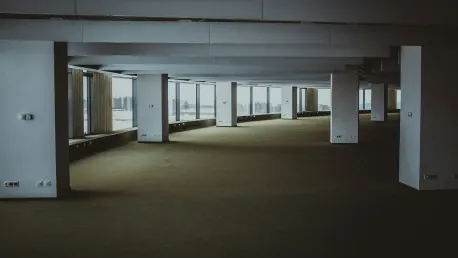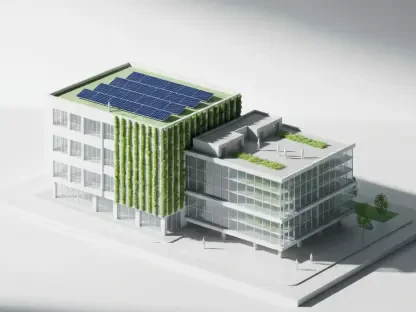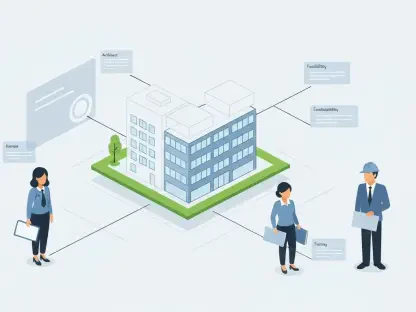Montgomery County is grappling with a housing affordability crisis, and new efforts to repurpose commercial buildings into residential units could be part of the solution. Recently, Montgomery County Council passed amendments to speed up these conversions as part of the More Housing N.O.W. legislative package. This initiative aims to tackle the issue head-on by transforming underutilized commercial spaces into places for people to live, potentially easing the shortage of affordable housing options in the county.
Legislative Efforts to Address the Crisis
More Housing N.O.W. Legislative Package
The More Housing N.O.W. (New Options for Workers) package includes a series of zoning and tax amendments aimed at increasing affordable housing options. This forward-thinking legislative package seeks to reimagine underutilized commercial spaces by converting them into diverse types of residential units such as duplexes, triplexes, townhomes, and apartments. A significant aspect of the initiative mandates that at least 15% of these new residential units serve the local workforce, ensuring that the housing crisis is directly addressed.
Spearheaded by multiple councilmembers, the package encompasses two zoning text amendments, a subdivision regulation amendment, and one bill that significantly alters tax structures for developers involved in affordable housing projects. This comprehensive approach aims to make a meaningful impact on the county’s housing scenario. The legislation was introduced by councilmembers Andrew Friedson and Natali Fani-González, with co-sponsorship from Council President Kate Stewart and fellow councilmembers Laurie-Anne Sayles, Marilyn Balcombe, and Dawn Luedtke. These councilmembers have articulated a collective vision to not only provide more housing but also ensure these options are accessible to workers who form the backbone of the community.
Key Components of the Legislation
A cornerstone of the package is the “payment in lieu of taxes” (PILOT) pilot program, which promotes affordability by offering substantial tax exemptions. The initiative received a 10-1 vote in favor and proposes a 20-year tax exemption for qualifying developments that include at least 17.5% moderately priced units at 60% of the county’s area median income (AMI). This is an adjustment from the initial proposal that set the workforce housing requirement at 15% with a 25-year tax exemption. The council’s decision to increase the affordability criteria while reducing the exemption period aims to ensure that developers contribute more significantly to workforce housing and that the benefits of the legislation are felt more immediately.
The subdivision regulation amendment and tax modifications are intended to incentivize developers to focus on affordable housing projects. These components collectively aim to make the development of affordable residential units more economically viable and attractive to developers. The adjustments made to the terms of the PILOT program demonstrate the council’s commitment to pragmatically balancing developer incentives with genuine affordability goals, seeking a pragmatic approach to a complex issue.
Council Discussion and Divergent Views
Councilmember Perspectives
Councilmember Natali Fani-González stressed the urgency of updating the zoning laws to reflect the current housing affordability crisis. She highlighted that converting vacant or under-utilized office buildings into residential spaces would create necessary income or property taxes from new residents while addressing the housing deficit. Pointing to successful models in other regions like Washington, D.C., she argued that the legislation mirrors practices that have already proven effective in addressing similar challenges elsewhere.
On the other hand, Council Vice President Will Jawando emerged as the sole dissenter, voicing strong concerns about the legislation’s capability to genuinely meet affordable housing goals. Jawando argued that significant subsidies should only be granted when deep levels of affordability are truly guaranteed. He expressed apprehensions that the legislative measures might end up subsidizing luxury market-rate apartments rather than achieving the desired levels of affordability. Despite proposing several amendments to tighten the bill’s focus on genuine affordability, Jawando’s suggestions did not gain sufficient support to be adopted.
Community and Council Debate
Councilmember Gabe Albornoz, despite having some reservations, backed the legislative initiative, underscoring the need for pragmatic solutions to meet the county’s housing needs. He acknowledged that while the proposed measures were not perfect, they represented an important step in the right direction. This acknowledgment reflects a broader consensus within the council that, although the approach may have its imperfections, doing nothing in the face of a housing crisis is not an option.
In the course of the discussions, the council also incorporated amendments proposed by Fani-González aimed at minimizing negative impacts on small retail businesses that might arise from the zoning changes. These amendments were designed to ensure that while new housing is introduced, it does not come at the expense of existing commercial interests that form an integral part of the community fabric. This emphasis on protecting small businesses demonstrates an effort to balance the imperative of increasing residential options with the necessity of safeguarding local commerce and preserving community dynamics.
Broader Community and Administrative Reactions
Public Opinion and Executive Stance
The More Housing N.O.W. legislative package has elicited a polarized response from the broader community. Supporters of the initiative argue that increasing the housing supply is essential to meet the growing demand and mitigate the housing affordability crisis. They believe that transforming underutilized commercial spaces into residential units could be a game-changer, making housing more accessible to the local workforce.
Conversely, critics have expressed concerns that the resulting development could infringe on existing neighborhoods’ character, questioning whether the initiative will effectively achieve its affordability goals. Among the critics, County Executive Marc Elrich has been particularly vocal, asserting that the current market dynamics are already producing the necessary housing without legislative intervention. He fears that subsidizing market-rate developments under the pretense of affordability could be misguided and ultimately ineffectual. Although Elrich lacks the authority to veto zoning text amendments, he retains the power to veto the PILOT legislation. As of now, there has been no indication of whether he will exercise this veto power, adding a layer of uncertainty to the program’s future.
Legislative Impact and Future Considerations
Montgomery County is facing a significant crisis in housing affordability, but new initiatives to convert commercial buildings into residential units may help address this issue. Recently, the Montgomery County Council approved amendments to expedite these conversions as part of the More Housing N.O.W. legislative package. This ambitious plan aims to directly confront the housing shortage by transforming underutilized commercial properties into living spaces, potentially mitigating the lack of affordable housing options in the county. The initiative seeks to repurpose spaces that are currently unproductive, thereby providing more housing opportunities for residents in need. As commercial spaces remain vacant or underused, this creative approach could revitalize neighborhoods while providing relief for those struggling to find affordable housing. With these amendments, Montgomery County is taking a proactive step toward ensuring that more people have access to safe and affordable homes, thereby improving the overall quality of life in the community.









